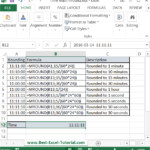Understanding Excel Financial Modeling: A Comprehensive Guide
Financial modeling in Excel is a powerful tool for analyzing business scenarios. It helps in forecasting financial performance and making informed decisions. Excel provides a flexible platform to build models that simulate the real financial world.
Getting Started with Excel Financial Modeling
Effective financial modeling in Excel begins with a clear objective and a well-defined structure. Organize your model by using separate worksheets for inputs, calculations, and outputs, ensuring clear labeling and consistent formatting for readability.
Crucially, use cell references instead of hardcoded values for inputs like revenue growth rates, cost percentages, and initial investments. This allows for easy modification and robust scenario analysis.
The core of a financial model consists of interconnected financial statements: the income statement, balance sheet, and cash flow statement.
The income statement calculates net income by subtracting costs and expenses from revenues.
The balance sheet presents a snapshot of assets, liabilities, and equity at a specific point in time, adhering to the fundamental accounting equation (Assets = Liabilities + Equity).
The cash flow statement tracks the movement of cash both into and out of the business. Critically, these statements must be linked together; for instance, net income flows into retained earnings on the balance sheet, and depreciation impacts both the income statement and cash flow statement.
This interconnectedness allows for robust scenario analysis, where changes to key input assumptions (e.g., revenue growth, cost of goods sold) propagate through the model, revealing their impact on overall financial performance.
For effective modeling, maintain simplicity, thoroughly document assumptions, and regularly validate results.
Using appropriate Excel formulas and functions (e.g., SUM, SUMIFS, PMT, FV, XNPV, XIRR) is crucial for accurate calculations and efficient model building. These functions allow you to automate calculations and create more dynamic and flexible models.



